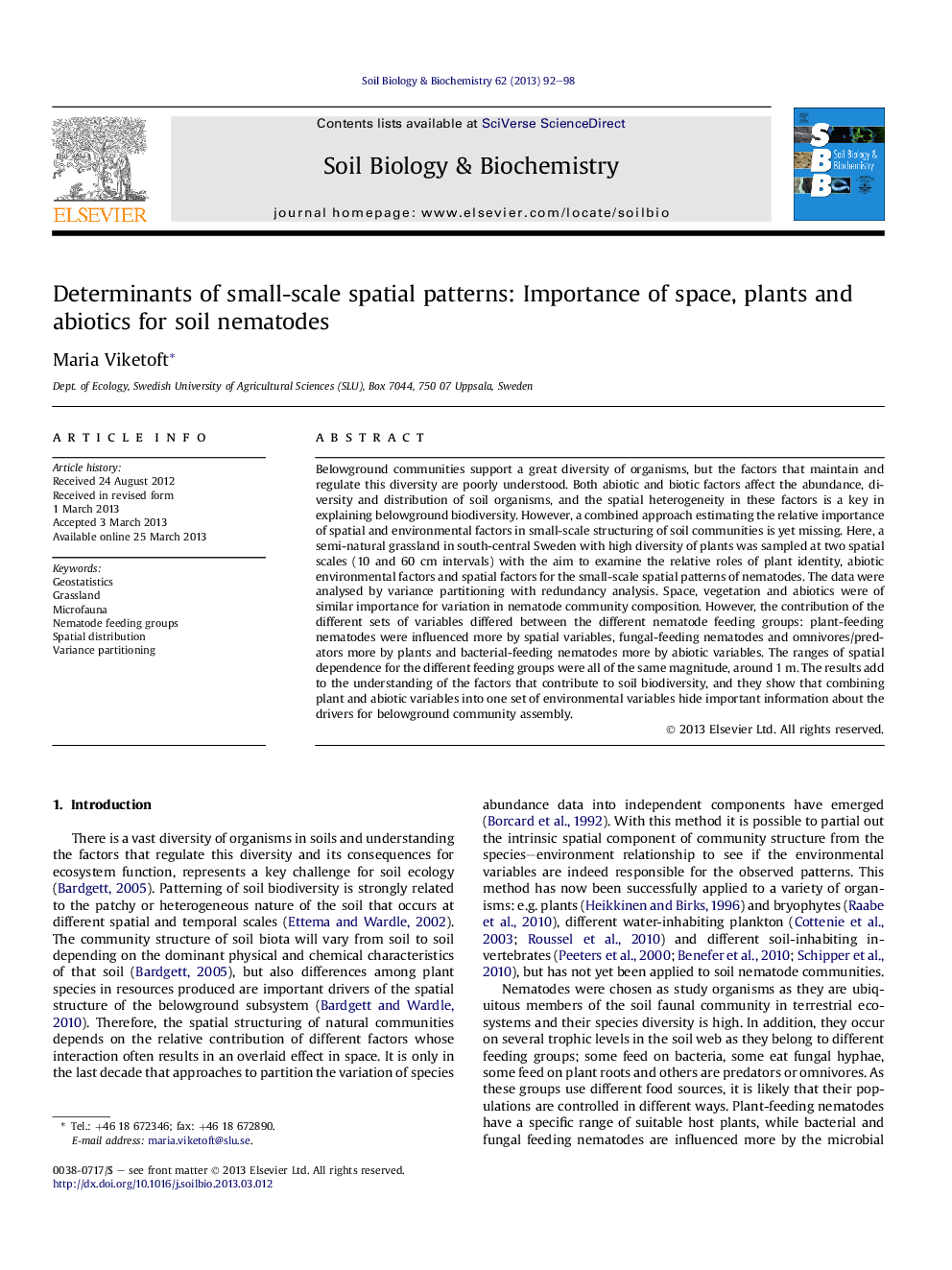| Article ID | Journal | Published Year | Pages | File Type |
|---|---|---|---|---|
| 8365244 | Soil Biology and Biochemistry | 2013 | 7 Pages |
Abstract
Belowground communities support a great diversity of organisms, but the factors that maintain and regulate this diversity are poorly understood. Both abiotic and biotic factors affect the abundance, diversity and distribution of soil organisms, and the spatial heterogeneity in these factors is a key in explaining belowground biodiversity. However, a combined approach estimating the relative importance of spatial and environmental factors in small-scale structuring of soil communities is yet missing. Here, a semi-natural grassland in south-central Sweden with high diversity of plants was sampled at two spatial scales (10 and 60Â cm intervals) with the aim to examine the relative roles of plant identity, abiotic environmental factors and spatial factors for the small-scale spatial patterns of nematodes. The data were analysed by variance partitioning with redundancy analysis. Space, vegetation and abiotics were of similar importance for variation in nematode community composition. However, the contribution of the different sets of variables differed between the different nematode feeding groups: plant-feeding nematodes were influenced more by spatial variables, fungal-feeding nematodes and omnivores/predators more by plants and bacterial-feeding nematodes more by abiotic variables. The ranges of spatial dependence for the different feeding groups were all of the same magnitude, around 1Â m. The results add to the understanding of the factors that contribute to soil biodiversity, and they show that combining plant and abiotic variables into one set of environmental variables hide important information about the drivers for belowground community assembly.
Keywords
Related Topics
Life Sciences
Agricultural and Biological Sciences
Soil Science
Authors
Maria Viketoft,
